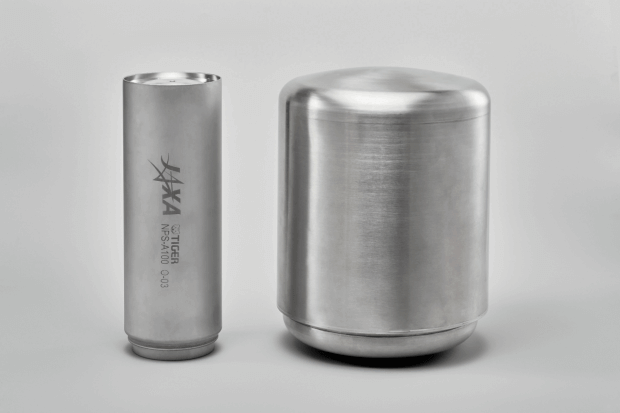We caught up with Tiger Corporation’s Keiji Nakai, who is the manager of the Product Development Group team 3, to discuss recent Tiger-JAXA collaboration:
Q: Could you provide our readers with a brief introduction to your company?
A: Founded in 1923, Tiger is a leading innovator of vacuum-insulation and thermal control technology. Tiger has collaborated with JAXA and Technosolver Corporation to develop double-insulated containers used to transport temperature-sensitive cargo to and from the International Space Station. Here on earth, Tiger empowers consumers to invest in the future of the planet with sustainable, eco-friendly, and elegantly designed products.
Q: How did Tiger and JAXA (Japan Aerospace Exploration Agency) become partners in space technology?
A: JAXA tapped Tiger to develop a double-walled, vacuum-insulated container to incorporate in a project. The 1st contact came through TIGER company website. Although the requirement was very tough, as our engineer thought that “If we don’t produce the container, this important project itself will be gone”, TIGER decided to join the project. It was the Kounotori 7 space mission that JAXA launched in 2018, the 1st opportunity for Tiger to collaborate with JAXA. Part of the mission involved placing experimental samples from the ISS inside a small re-entry capsule developed by JAXA and Technosolver, a space solutions consultant, to be released from Kounotori 7 for recovery in the Pacific Ocean on the way back to Earth.

Photo by JAXA
Recommended: OroraTech – A NewSpace Start-Up Providing Global Wildfire Detection And Monitoring Services
Q: Can you share any highlights on your recent announcement?
A: The 2nd project with JAXA has been launched from Earth to ISS on 3rd June, 2021. New double-walled, vacuum-insulated container for carrying experimental samples back to Earth from outer space missions led by JAXA. TIGER and JAXA, Technosolver developed this container. The sample will be back to earth after 1-month experiment in the ISS.
Q: In what capacity has Tiger’s technology supported JAXA?
A: Using the knowledge and top-tier insulation technologies the company had built over the course of a century (since 1923), Tiger has been able to help JAXA ensure that these precious samples retrieved from the ISS in a proper temperature condition.
Q: Tell us about Tiger’s insulation technology specifically. How has Tiger become a leader in this category?
A: Since our founding in 1923, we have maintained an unwavering focus on improving insulation for a wide range of usages. Instead of being satisfied with the tried and tested, we’ve pursued one innovation after another with the restless spirit of the pioneer. As a result, we have become leaders in our field.
Q: What are the findings we are hoping to learn from partnership with JAXA?
A: Since the Space quality control and development process for those products are completely different from consumer products, there are many things to learn in the development process. Especially the method of comparing simulation and experimental results is very different from our way of quality inspection, we have lots to learn from them.

Photo by Tiger corporation
Recommended: Dusty Creates Robot-Powered Tools For The Modern Construction Workforce
Q: Where does the future lie for Tiger and new innovations?
A: Usually, our double insulated stainless-steel bottle keeps the drinks about half a day to the whole day. Thus, we have not even imagined keeping things cold/warmth for 4 days or 12days as required by JAXA. From this double wall insulated vacuum container, we feel infinite possibilities and variety of needs towards our vacuum insulation technology.
Q: How will Tiger continue to evolve space technology in 2021 and beyond in supporting organizations like JAXA?
A: Beyond sample containers, the insulation technology resulting from this collaboration also has numerous commercial and industrial applications. These include transportation solutions for medical samples and reagents that require storage under strict temperature conditions. It could also lead to new applications for thermal management in electric and hybrid cars. But perhaps the most interesting application is in the development of next-generation building materials that could provide high levels of insulation in extreme environments such as Antarctica, where research stations need to conserve heat—and even on the Moon and Mars.

